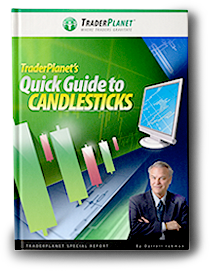W. D. Gann – a trader active during the first half of the 20th Century and a developer of unique analytical methods, such as the Square of 9 and Gann Angles –
was reputed to be able to predict within a few ticks the top and bottom of a stock’s range within a specified period of time. Richard Wyckoff claimed that Gann’s trading ability was so good that it was “… probably unparalleled in the history of the Street.”
Picking Tops and Bottoms
Wouldn’t it be wonderful to be able to pick the top or bottom of a market within a few ticks consistently? Every trader would love to possess that ability. Of course, few, if any, do have this talent. It would be like having tomorrow’s newspaper today. A nice try but totally unrealistic.
Despite the recognition that calling the market consistently is unrealistic, we may think others have that ability. Many look to market experts, newsletter writers, those who make morning calls, and others thinking they must have some special aptitude for predicting the next market turn. We seem to place a lot of faith in them. After all, good money is paid for their prediction services and many traders put their capital at risk based on their predictions. This begs the question: Is that faith justified?
Maybe not. Several independent and objective studies have shown that expert predictions about the next move in the markets generally can be quite inaccurate.
Why Experts Aren’t So Great
One of the first studies I became aware of which demonstrated a lack of expertise among the experts was published in The Economist in 1994. Titled, “Garbage In: Garbage Out,” The Economist asked a number of people to give their predictions on the economic prospects for the coming decade. Survey questions covered forecasts on economic growth, inflation, the US Dollar-British Pound exchange rate and when Singapore’s GDP would overtake Australia’s. People from each of the following groups were surveyed: Oxford University economics students, chairmen of multinational companies, former finance ministers, and London dustman. Guess who had the best predictions – garbage men and company chairmen. The group with the worst predictions were the finance ministers. A summary of the study is available on The Economist website: Garbage in, Garbage Out: Dustmen Make the Best Forecasts
Wall Street Journal Dartboard Competition
For fourteen years, beginning in October 1988, the Wall Street Journal ran its “Investment Dartboard Competition.” This was a stock picking contest inspired by Burton Malkiel, author of A Random Walk Down Wall Street, who famously said, “A blindfolded monkey throwing darts at a newspaper’s financial pages could select a portfolio that would do just as well as one carefully selected by experts.”
Over the years, more than 200 investment professionals picked stocks to compete with stocks selected by Wall Street Journal staff members who – acting as monkeys – selected their stocks by throwing darts at the paper’s stock tables tacked to the office walls (Burton Malkiel ceremoniously threw the first dart). Six months later, results were tallied. After 142 dartboard contests, the professionals did come out ahead with an average gain of 10.2% verses the dart-throwing staff’s 3.5% average gain (For comparison, the Dow Industrials had an average gain of 5.6%.)
Although the professionals won overall, they beat the darts only 61% of the time. That’s better than chance, but not by much. Losing 39% of the time to random picks made by darts isn’t something to brag about. Moreover, the investment professionals in these contests beat the Dow only 54% of the time – a pretty thin margin, suggesting that a passive investment in an index fund could do nearly as good, and perhaps as well, after adjusting for fees, transaction costs, and taxes on short-term gains. Georgette Jasen, staff writer for the Wall Street Journal, wrote a summary article on the contest that can be accessed here: Journal’s Dartboard Retires after Fourteen Years of Stock Picks
Market Gurus
Many traders do rely on newsletters, morning calls, and market experts to help them make sense of the markets. CXO Advisory Group looked at over 6,500 forecasts for the U.S. stock market made from 1998 to 2012. These predictions were made publically by 68 market experts using a variety of technical, fundamental and sentiment indicators making both bullish and bearish predictions. The average accuracy rate during this period was fairly stable at 47%. That’s like flipping a coin.
Among the 68 gurus with at least 100 predictions, the best accuracy rate was 66.4% and the worst was 28.6%. The distribution of accuracy rates reflected a normal curve with most gurus falling within the 40% to 56% accuracy rate range. You can see the full CXO study here: Market Gurus
Considerations for Traders
It’s natural that we look to others we believe have more skill and expertise for guidance. In the trading environment where risk, ambiguity of information, and uncertainty of outcome prevail, seeking the advice of others may feel essential. Here are a few suggestions traders can consider when seeking the advice of market experts:
- Be wary. Although there are experts out there, like everything else, the field has a wide range of skills and abilities. As the studies show, the average professional finds it difficult to maintain consistent accuracy. The markets are a tough place to operate, even for skilled professionals.
- Check the track record. If you are subscribing to a market newsletter, check up on its performance. CXO Advisory no longer does the research noted above (because the findings were so consistent), but other services that are independent and have extensive data exist and could be helpful to the trader in this regard.
- Be especially wary of individuals touting huge gains and miracle returns. Objective analysis tells us this just isn’t reliable. Anyone can set up a blog or social media account and start recommending stocks. If it sounds too good to be true, well, you already know it is.
- Recognize that market experts are human, too. They are subject to the same kinds of mental traps, cognitive biases and psychological errors as everyone else. Behavioral finance is replete with studies showing that experts are vulnerable to the psychological pitfalls of decision-making under risk and uncertainty.
- Become more self-reliant. Put effort into developing your trading and market-reading skills and understanding the conditions under which you are most likely to fall victim to decision-making errors. Learn to rely on yourself and become the best trader you can.
#####
More Writing From Dr. Gary Dayton …
- How Hidden Flaws in Your Decision-Making Affect Your Trading
- Three Questions With The Power To Transform Your Trading




